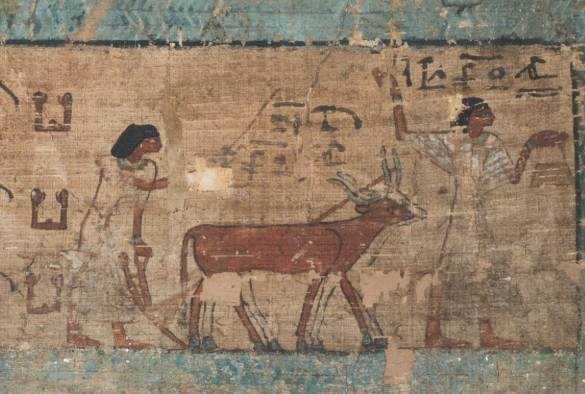University gallery explores world of ancient Egyptian and Sudanese animals

This spring the University of Liverpool's Victoria Gallery & Museum presents, Creatures of the Nile. The exciting exhibition explores the fascinating position animals held in ancient Egyptian and Sudanese society and culture.
On from Saturday 4 May – Saturday 5 October 2024, Creatures of the Nile features more than 250 objects, many of which have never been on public display. Highlights include one of the earliest known depictions of a domesticated dog, a sheet from the 3,500-year-old Book of the Dead and a bronze statue which entombed a mummified cat. Exhibited objects come from the collections of the University of Liverpool's Garstang Museum, with additional artefacts on loan from National Museums Liverpool and Manchester Museum.
Many species of animal called the Nile their home, long before humans settled there. As Nile-centred civilizations appeared, these creatures became central figures in societies' depictions of their world. From elaborate tomb scenes and sacred writings to amulets and pots, animals were a central motif in how people and communities communicated their values and beliefs.
In ancient Egypt and Sudan, gods were often represented in the form of an animal, taking on the full or partial appearance of creatures including lions, snakes, or baboons. These images of divine power are among the most identifiable features in Egyptian art and were represented in objects including inscribed funerary stones and protective amulets, which will be displayed in this exhibition.
The exhibition also explores mythical animals depicted in Egyptian and Sundanese art. A striking and unusual object exhibited in Creatures of the Nile depicts a hippocampus – an animal with the head of a horse, but the body of a snake.
From the spiritual to the practical, animals played a key role in everyday life with animals used in food and farming. Oxen at work in the fields of the afterlife can be seen in pages from the Book of the Dead and on inscribed funerary stones, while the exhibition also features objects made from rare materials like ivory and ostrich eggshell.
Significantly, the exhibition examines climate change in the Nile Valley. Collaborating with colleagues from the Leverhulme funded Biodiversity in Egyptian Archaeology during Societal Transitions project, the exhibition features the impact of climate change and human over-exploitation of resources. Tools used for hunting, including a stunningly preserved 4,000-year-old throw stick used for catching birds, feature alongside a timeline showing the appearance and disappearance of species in Egypt.
Nicola Euston, Head of Museums and Galleries at the University of Liverpool, said: "We're incredibly excited to bring this unique exhibition to the gallery. It showcases the University's world-leading ancient Egyptian and Sudanese collections and gives our visitors the opportunity to see many pieces for the first time. Significantly it explores an area of this ancient history that is often overlooked. While of course, stories of pharaohs and mummies have captured our imaginations for centuries, it's fantastic that we're representing the important role animals played and how their existence shaped civilisations."
Creatures of the Nile is curated by Dr Gina Criscenzo-Laycock, Curator, Garstang Museum of Archaeology, with Dr Juliet Spedding, Post-doctoral Researcher, Biodiversity in Egyptian Archaeology during Societal Transitions (BEAST) project.
-- Sent from my Linux system.
No comments:
Post a Comment